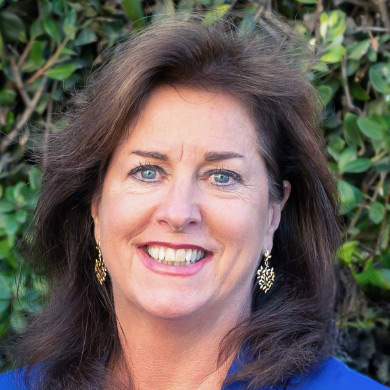Drugs are no longer part of a peace and love culture; they destroy lives and communities. We see this every day in San Francisco, where homelessness, crime and squalor—much of it drug-related—have taken over city streets.
According to the Office of the Surgeon General, more than 27 million people in the United States report “they are using illicit drugs or misusing prescription drugs.” The annual economic impact of illicit drug use is estimated at $193 billion. The human impact is even more tragic, with nearly 107,000 deaths from “drug-involved overdose” in 2021 alone, the latest year for which the National Institute on Drug Abuse has statistics. The data for 2022, when it’s released, will be no better. And this year will probably top that.
The alarming spike in deaths from illicit drugs and prescription opioids is sparking increased interest in a European solution to drug abuse: establishing supervised drug-use centers where addicts can safely get their fix without fear of overdosing or receiving fentanyl-tainted drugs.
Several states, including Colorado, Nevada and New Mexico, are considering similar proposals. A nonprofit called OnPoint NYC operates two sites in New York City. Rhode Island, the first state to approve such sites (in 2020), will open its first location early next year.
The Europeans ended their widespread drug scenes when they recognized casual drug use as a seriously destructive societal force, implementing measures to end them while providing real help to the addicted.
U.S. advocates of supervised drug-use sites, sometimes called overdose-prevention centers, have good intentions. But they may be surprised to learn that the “European model” they embrace involves more than supervised drug use; it seeks to end drug dependency as well.
Having once had drug scenes akin to San Francisco’s, European cities such as Amsterdam and Lisbon now have “no tolerance” policies for open drug use and drug dealing. In every major European city, open drug scenes are prohibited and met with police action. Drug-use facilities thus exist within structured systems with multiple goals, including not only harm reduction, but prevention and treatment as well.
With active cooperation among police, health care and social service agencies, drug users are referred to on-demand treatment services, with easy access to low-threshold opioid-maintenance treatment, but with the explicit goal of recovery from drug use, not its perpetuation. Thus, supervised drug sites are explicitly part of the path to recovery, or for those rare individuals unable to overcome their addiction, not for the everyday consumption of drugs.
Portugal is often held up as a model for its decriminalization of all drugs. Left out is the fact that all non-prescription drugs remain illegal there. Individuals found in possession of them are arrested and taken to police stations, where their drugs are weighed. Those with amounts exceeding what is legally permitted for personal use are charged as traffickers. Those in possession of acceptable amounts are referred to an agency called the “Commission for the Dissuasion of Drug Addiction,” from which they are directed to on-demand treatment, on either a voluntary or, in repeat cases, a mandatory basis.
The European policies reflect a view of drug use as a social behavior subject to ordinary social rules, with problematic behavior to be controlled and prevented. Addiction is seen as a chronic, recurring disease best dealt with through treatment not jail.
João Goulão, Portugal’s director-general of drug policy and the architect of its radical approach, says, “The most important part was making treatment available to everybody who needed it for free.”
In contrast, supervised consumption sites in North America, notably in Vancouver, British Columbia, and New York City, operate within a culture that continues to accept open drug use with no expectation of recovery. As a result, the supervised drug-use centers become magnets for drug dealers, open drug use, sex-for-drugs trading, public filth, and violence. Widespread disorder is the norm—so much so that the preschool across the street from a supervised drug-use site in Harlem had to install bullet-proof glass.
This was the experience last year with San Francisco’s short-lived Tenderloin Center, which surreptitiously housed a supervised drug-use site. Opened as the Tenderloin Linkage Center, “linkage” was dropped from its name within months, a tacit admission that few were being linked to needed services.
Despite strong support from the mayor and the media, the center was forced to close because local residents were fed up with the open drug dealing, drug use, and related behavioral issues the center spawned. Those now advocating for opening new sites in the city offer no remedy for these spill-over effects, meaning San Franciscans can look forward to more concentrated drug scenes and the problems they create.
Proponents’ contentions that such sites reduce overdose deaths are appealing, but tell only part of the story. What we’re usually told is that there have been zero deaths at the centers. Yet, if the intent is to reduce drug-overdose deaths, they fail to do so. Overall, drug deaths in Vancouver more than doubled from 2016 to 2022, from 231 to 550, despite its 12 overdose-prevention sites. Drug-overdose deaths in the year in which the Tenderloin Center operated increased slightly from the year before, from 640 to 647.
Americans have a precedent in adopting the same attitude toward drunk driving and cigarette smoking, resulting in significant declines in both. Sooner or later, we are going to have to end our schizophrenic attitude to drugs and decide if they belong in the same category. If they do, supervised drug-use sites can be one piece in a continuum of care that restores lives. But on their own, they will not reduce or end drug deaths. Proponents get that wrong.








